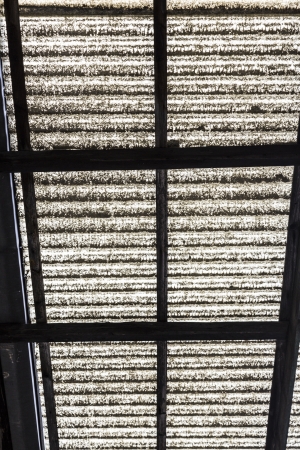Removing Conservatory Roof Panels
Polycarbonate Roof Image Copyright: arminstaudt / 123RF Stock Photo
There are a number of reasons why you might need to think about removing conservatory roof panels. These include:
- Reseating slipped panels (very common)
- Conservatory Roof Conversions
- Replacing broken panels
- Thorough cleaning
- Reaching an inaccessible part of the conservatory roof or house
Removing conservatory roof panels is a relatively simple process but can be complicated by factors such as access and degraded materials (e.g. brittle plastic, seized screws, etc.)
Disclaimer:
Working at height is inherently dangerous and you are responsible for your own safety. This article is provided for informational purposes only, and we recommend that you contact a specialist in conservatory roof replacements to remove your conservatory glazing bars and replace roof panels.
This article is about removing conservatory roof panels made from polycarbonate in uPVC/aluminium roof systems. Instructions are not meant for glass roofs or timber frames and may not be accurate for all types of uPVC/aluminium systems. If your roofing system is still under guarantee we recommend calling out the original fitter to rectify any problems.
1. Remove Rubber Gasket
Prior to removing the conservatory roof panels, carefully remove the rubber gaskets between the aluminium glazing bars and the glass. It is best to replace the gaskets with new ones when you replace the panels.
2. Remove Glazing Bar End Caps
At the edge of the roof you will find end caps covering the glazing bars. These are usually fixed using a screw. Removing the screw and end cap will reveal the inside of the glazing bar/glazing bar cap combination.
See our companion article for more detailed guidance on how to remove snap down glazing bars, especially if your end caps aren’t screwed in at the end.
3. Prize Up Glazing Bar Cap
This is usually the trickiest part of removing conservatory roof panels. Using a screwdriver (or ideally a special glazing bar cap removal tool), CAREFULLY work the plastic cap apart from where it joins the toothed aluminium glazing bar. Make sure you are holding the polycarbonate panels in place.
4. Slide Out Polycarbonate Roof Panels
The panels should now slide out. If silicone or adhesive has been used they may require some careful freeing.

